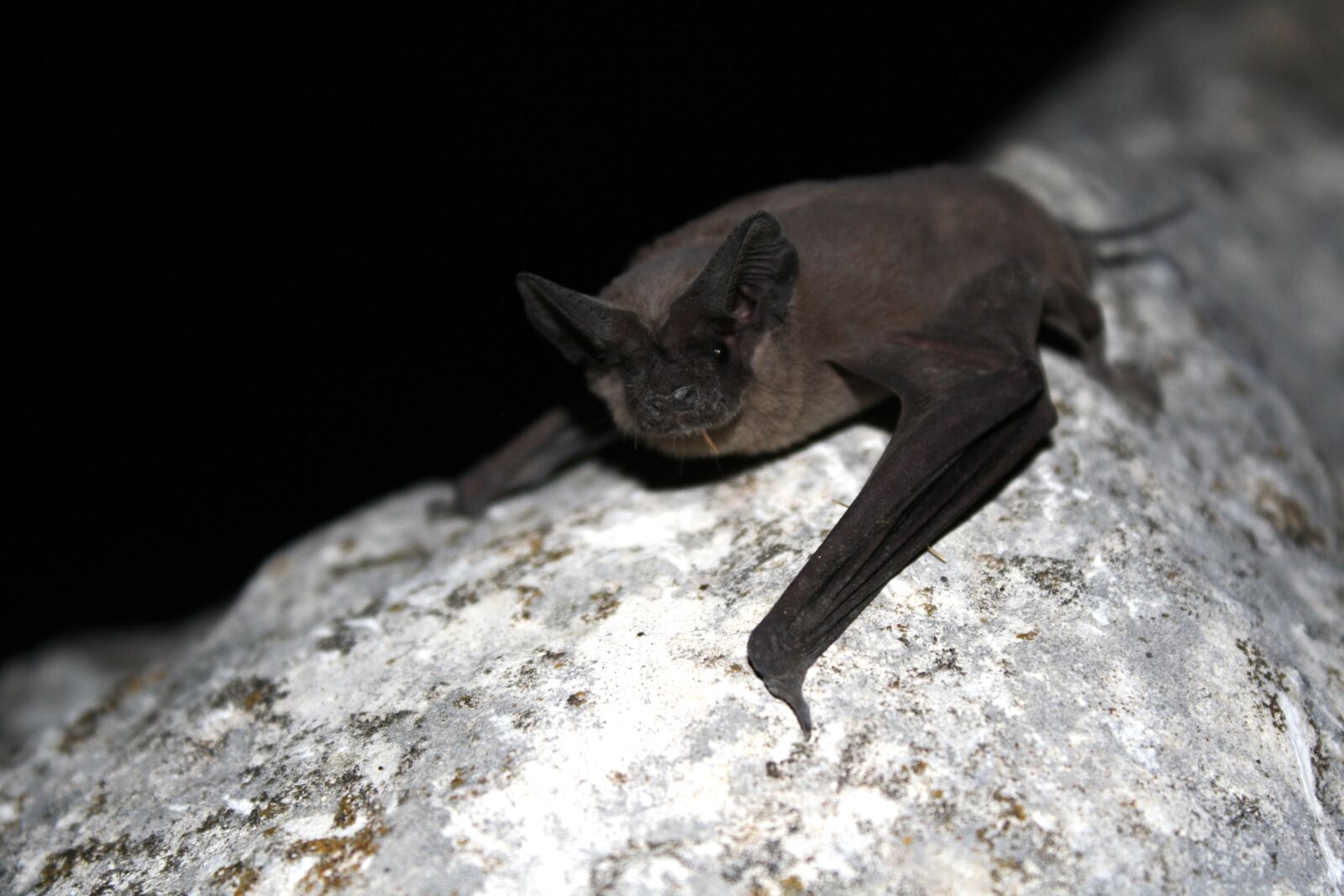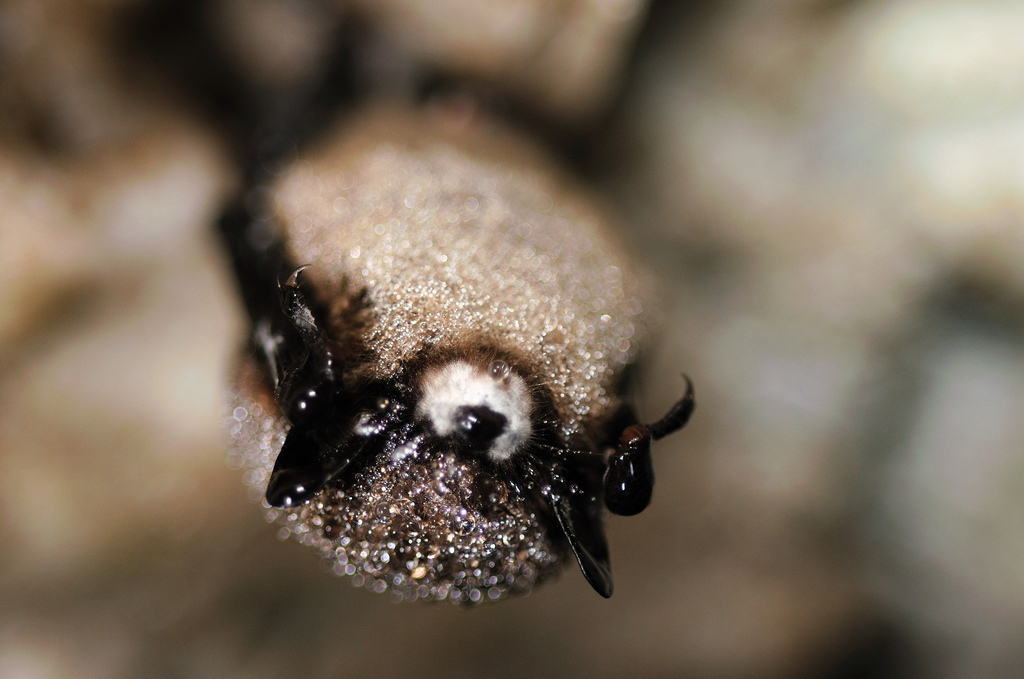When people hear “bat” they often think of dark caves and spooky stories, but did you know bats play an important role in keeping forests healthy?
More than half of North American bat species roost in dead and dying trees. Other bat species roost in the foliage of living trees or sites located in or near forests, including caves, cliff faces, bridges, and even old buildings. No matter where they live, almost all bat species rely on forests for survival as places to forage, find water, and seek shelter. But forest health also depends on these night-flying mammals.

Photo by the NFF.
Bats protect saplings from insect damage
Many bats eat nearly their own body weight in moths, beetles, and other insects every night. Not only does this form of natural pest control help make your hikes through the wilderness more enjoyable, but it also protects young trees from insect damage. Researchers found that forest areas without bats had three times as many insects and five times more defoliation than areas with bats. This defoliation makes saplings more vulnerable to drought, fungal diseases, and other stressors. When bat populations are healthy, forests are more resilient.

Photo by Ann Froschauer, courtesy of the U.S. Fish and Wildlife Service.
Bats help pollinate and disperse seeds
Not all bats are insectivores. Some eat fruit, seeds, and nectar from flowering plants. Bats pollinate plants as they move from flower to flower in search of nectar. More than 500 species of plants rely on bats for pollination – including human favorites such as mango, guava, and agave.
Fruit-eating bats disperse seeds when they excrete them far from the original plant. Their poop even acts as fertilizer to help the seed grow! Needless to say, bats play an important role in reforestation and keeping forests healthy.

Bat with White Nose Syndrome. Photo by the U.S. Fish and Wildlife Service.
Managing forests for bat health
Unfortunately, bat populations have declined over the past decade. Due to a combination of White Nose Syndrome and habitat loss, many North American bat species are or are at risk of becoming endangered. In response to their declining numbers, the U.S. Forest Service, the NFF, and other forest managers have started using management practices that promote healthy habitats for bats.
Bats have a difficult time navigating dense forest growth. Creating open forests through prescribed burns and midstory thinning helps bats forage as well as reduce fuels for wildfire and restore forests to pre-fire suppression management. Forest managers are careful not to remove all dead or dying trees (snags) from the area though. When safe, leaving some snags provides bats with places to roost. Not only will bats benefit, but the dozens of other wildlife species that depend on snags will benefit too!
Read the U.S. Forest Service’s guide on forest management and bats.
Cover photo by Ann Froschauer, courtesy of the U.S. Fish and Wildlife Service.
--------
Did you learn something new in this blog post? We hope so! The ecology that binds together everything on our National Forests is a fragile web, and we at the NFF are committed to doing all we can to ensure the healthiest forest ecology we can. To do so requires the support of caring individuals like you. Will you join us to ensure this critical work continues? Simply click here to join with thousands in this important work. Thank you!

